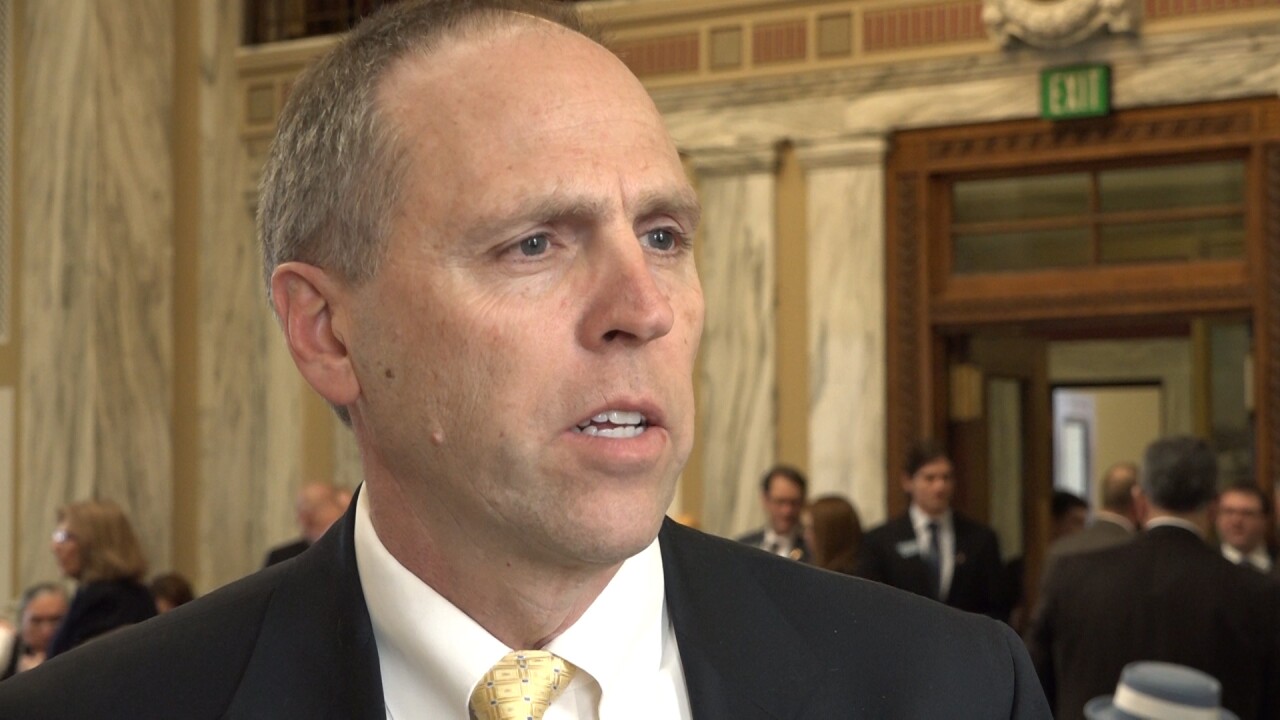HELENA — As the 2021 Legislature nears its end, Republican lawmakers are ironing out the final details on a multimillion-dollar tax-cut bonanza likely to include income- and property-tax cuts.
The centerpiece is a reduction in the state’s top income-tax rate and, eventually, a possible overhaul of the entire income-tax structure, reducing the number of tax brackets to only two and eliminating two-dozen tax credits.
The Republican majority appears ready to pass one bill reducing the top income-tax rate from 6.9 percent to 6.75 percent, starting in 2022 -- and then a second bill to revamp the system and lower the top rate to 6.5 percent, starting as early as 2023. Both bills are on the House floor Thursday.
“We have one of the highest (income) tax rates in the region and we need to get that rate down,” said Sen. Greg Hertz, R-Polson, the sponsor of both bills. “That’s what these bills are intended to do over the next several years, so we reduce our rate to be more competitive and attract new businesses to the state of Montana.”

But the state income tax isn’t the only thing on Republicans’ tax-cutting menu this session.
They’ll also be voting within the week on bills to eliminate business-equipment property taxes for more smaller businesses, increase property-tax credits for elderly homeowners and, possibly, reduce property taxes that fund schools.
All told, the reductions could total as much as $50 million a year, or more, depending on the final details of each bill. The income-tax alone is estimated at $30 million for its first full year, and possibly increasing to $40 million by 2023.
Democrats are opposing most of the measures, but are powerless to stop them.
Mike Kadas, the state revenue director under former Democratic Gov. Steve Bullock, told MTN News that he questions whether any income-tax cut is needed, and said GOP plans in that area benefit primarily wealthy taxpayers.

“If you’re going to cut taxes, why are you giving so much benefit to the wealthy income-earners?” he said. “Pretty simple story, and not one Republicans want to hear. And they’re in the majority, so they don’t have to hear it.”
Hertz said wealthy taxpayers aren’t the only ones who will benefit from the income-tax overhaul contained in his Senate Bill 399, which, if passed, would take effect in 2023 or 2024.
“We’re taking 50,000 low-income earners off the tax rolls, which a lot of people don’t always mention,” he said. “There will be winners and losers, but it basically makes our tax system more fair. … Everybody should pay their fair share of taxes, and that’s what I think this bill accomplishes.”
One of the bill’s major changes is basing state income taxes on a taxpayer’s federal taxable income, rather than “adjusted gross income,” as it is now. This change means Montana taxpayers would get the benefit of the current standard federal deduction of $12,400 for a single person or $24,800 for a married couple.
Any household earning less than that threshold would pay no state income taxes.
However, Kadas notes that the federal deduction is scheduled to expire in 2025, and said any other changes in federal taxes by Congress could lead to fluctuations in taxpayer liability or state revenues.
“It’s harder to predict what the consequences are, of what your other changes are going to be,” he said. “If you’re off by $30 million or $40 million (on revenue), that’s the kind of thing that can put the state into deficit, and a special session (of the Legislature), with big budget cuts.”
Hertz said tax rewrites like SB399 have been analyzed and discussed before the Legislature for the past several years, and that he’s confident it won’t lead to dramatic, unexpected changes for taxpayers.

The Montana Society of Certified Public Accountants has been helping on the bill and supports it, he added.
It would create just two tax brackets, of 4.7 percent for income up to $20,500 for singles and 6.5 percent for income above that level. The bill also eliminates two dozen tax credits, including several for green-energy production and conservation, health insurance and donations to college.
The bill does maintain some credits, however, including a deduction that exempts 30 percent of capital gains income from taxation. Capital gains are profits from the sale of property, stock or businesses.
Kadas said most of this type of income flows to wealthier taxpayers, and that he sees no need for the deduction.
Hertz said it benefits a broad range of people, such as business owners or farmers and ranchers who may have held or operated property for many years and are getting a one-time gain they plan to use for retirement.
He also said the deduction will not apply to capital gains from property held less than a year, so “day traders” in stock won’t benefit.
Both of Hertz’s tax bills should be on the House floor later this week.
It's also not yet entirely clear how these cuts will fit into the state budget -- although part of the reduction may be covered by new tax revenue from the sale of recreational marijuana.
The other tax-cut measures in the mix include:
· House Bill 191, sponsored by Rep. Mike Hopkins, R-Missoula, that expands an income-tax credit for elderly homeowners, based on their property taxes. Worth about $3 million a year, the bill is before the Senate Finance and Claims Committee.
· HB303, sponsored by Rep. Joshua Kassmier, R-Fort Benton, that increases the number of smaller businesses that could exempt their equipment from property taxes. It’s worth about $4 million a year in its current form and awaits action by the Senate Finance and Claims Committee.
· HB633, sponsored by Rep. Brandon Ler, R-Sidney, increases state funding for selected school districts, allowing them to reduce corresponding property taxes. In its current form, the bill would cost the state about $10 million a year. It, too, awaits action in the Senate Finance and Claims Committee.





